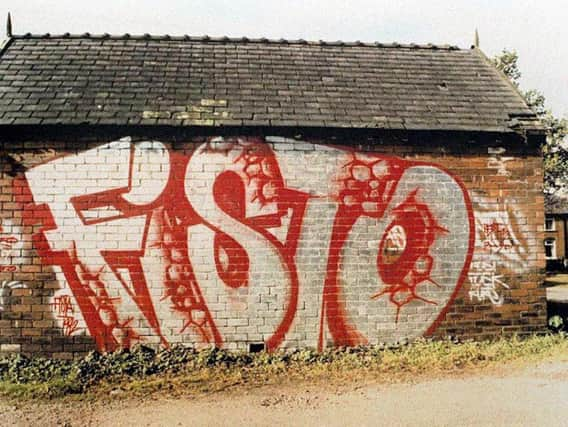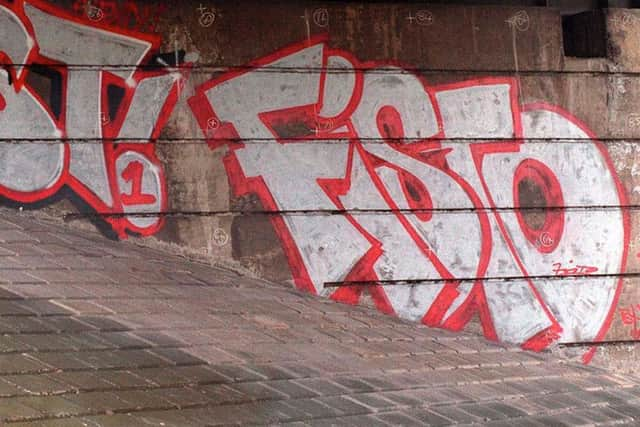Can you remember Sheffield graffiti king Fista 20 years on from reign of vandalism?


In the spring of 1996, Fista, aka Simon Sunderland, was beginning a five year jail sentence after daubing his "tag" across public buildings, walls, motorway flyovers and lampposts across Sheffield and beyond.
The lengthy prison term for Sunderland, then 23, came after several months spent on remand and sparked outrage, with supporters including MPs and musicians leading calls for him to be freed. He was eventually released more than a year later when his sentence was cut on appeal.


Advertisement
Hide AdAdvertisement
Hide AdSunderland later vowed to put his criminal past behind him, and concentrate on legitimate fine art, enrolling on a course at Barnsley College and even enjoying the distinction of a solo exhibition at the Archipelago gallery on Ecclesall Road, Sheffield.
But he was later back before the courts, admitting causing £90,000 of damage to the rail network with his new moniker Bloodaxe from January 2008 to October 2009.
He was sentenced to 18 months in 2014.
He also narrowly escaped jail in August 2002 after admitting spraying painting two bridges near Barnsley causing an estimated £5,000 damage. But he was jailed for 11 weeks in 2002 for spray painting the word Ajax on a bridge.


At his original sentencing in 1996, Judge Robert Moore, said the Fista tag was "one of the most prevalent and frequent spoilers of buildings in the area."
Advertisement
Hide AdAdvertisement
Hide AdSome of Sunderland’s handiwork was colourful and eye-catching, apparently intended as a protest at a world dominated by greed and big business.
The rest consisted simply of his hastily-scrawled tag.
Det Insp Mick Jackson from British Transport Police said after the case: “Sunderland is a prolific vandal who targeted the rail network over a number of decades. Some people consider graffiti to be art. In reality it is vandalism that not only scars the environment but contributes to the fear of crime and costs thousands of pounds.”